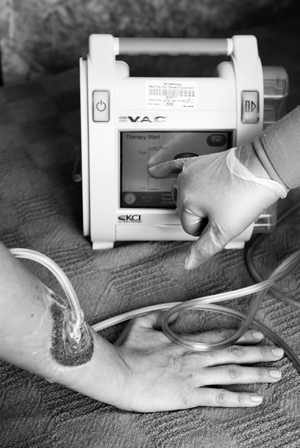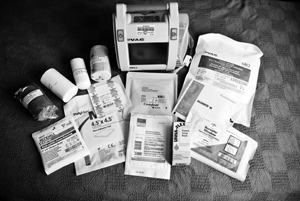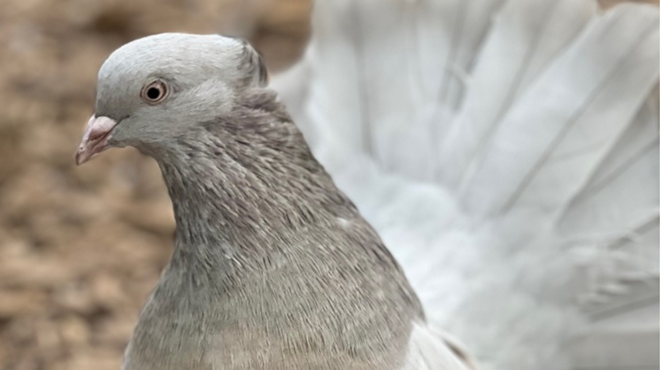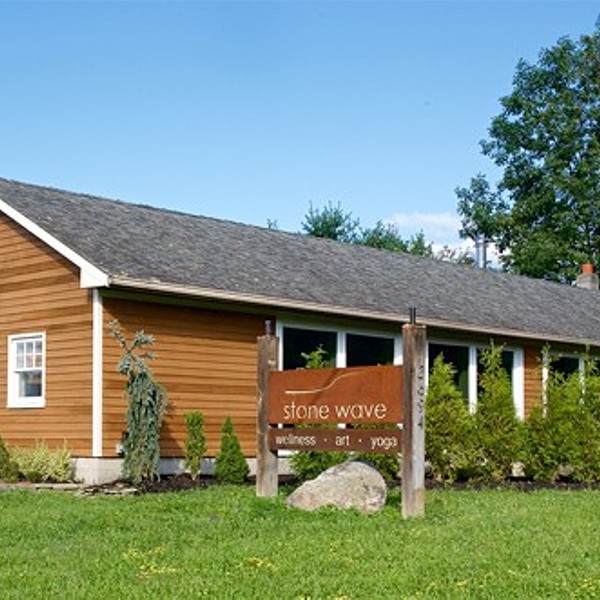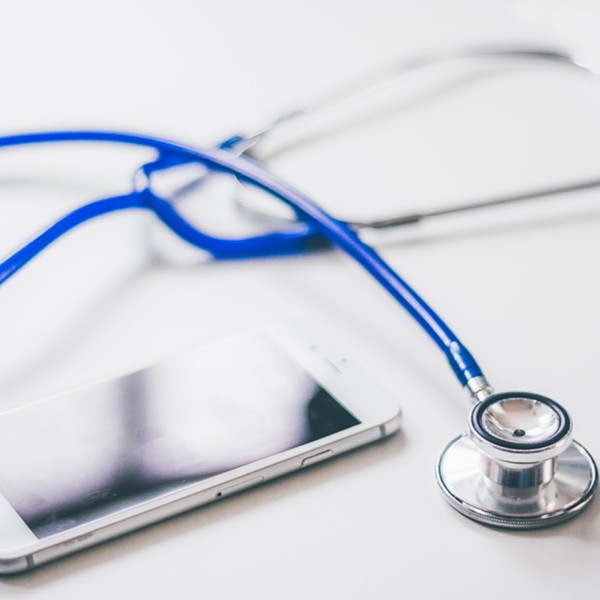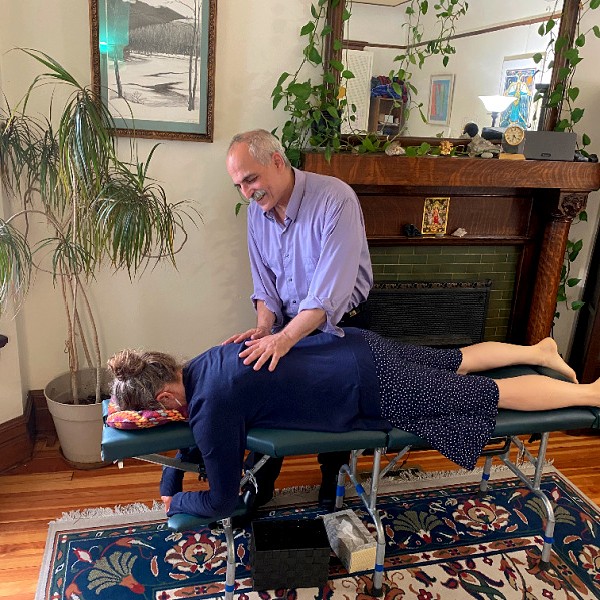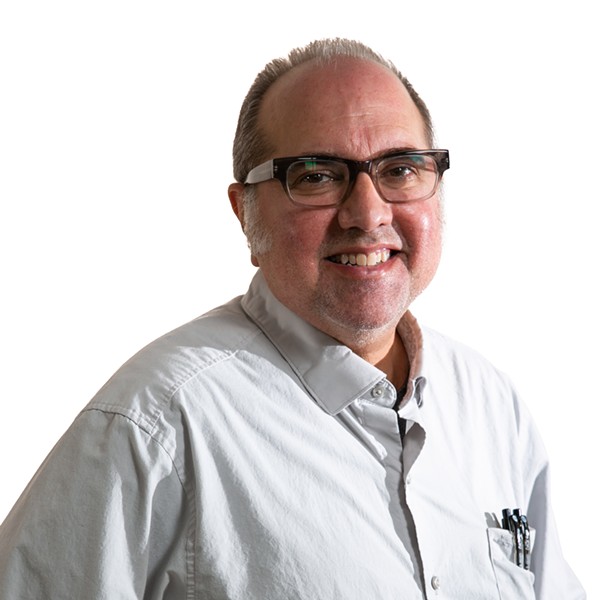A chronic wound is defined as one which won't heal by conventional means during a three to four week period. modern advances in wound care treatment at area hospitals are helping to jumpstart the healing process with the latest technological innovations.
A burgeoning rate of diabetes coupled with an aging population has brought a consequence of age and the disease to the forefront of a number of regional hospitals during the past decade—the chronic wound. Defined as a wound that will not heal by conventional means during a three to four week period, a chronic wound is tissue trauma that endures a stalled healing process due to underlying conditions that can include diabetes, poor circulation, infection, and immobilization.
“We’ve seen an unusual rise in the number of chronic wounds in the last several years and that’s mainly due to the rise in diabetes and elderly patients,” said Dr. Daniel Goldman of Vassar Brothers Medical Center’s Wound Care and Hyperbaric Center, which began operating the first wound care center of the area in 2000. “Our patients are a mixture of a lot things. Over 65 percent of our patients are on Medicare, so they’re on the older side of our population. Forty percent of them are diabetic and a good majority of them have venous insufficiency, maybe 60 to 70 percent some of them have a certain degree of arterial insufficiency. So we have a good deal of mixed settings that prevent a wound from healing rapidly or normally.”
While these are primarily issues associated with the diabetic and aging, Goldman said that infection, which could happen regardless of age or other factors, is also a key cause in triggering a chronic wound. “Infection is a common culprit that makes a wound advanced because it gets stuck in an inflammatory phase,” he said. “A young, healthy guy could fall and cut himself and it gets infected and he has a problem wound. That infection has to be controlled for that wound to heal, and the longer that goes on the harder it gets to heal that wound.”
Goldman said that the Wound Care and Hyperbaric Center at Vassar Brothers has an array of treatments to help patients repair injuries. “We have everything at our fingertips to use that’s state-of-the-art in wound healing,” he said. “We have vascular surgeons, plastic surgeons, podiatrists, and general surgeons all working in concert to help get these patients through healing. We use standard classical wound care, we use advanced modalities of wound care, and we use hyperbaric oxygen when indicated.”
Goldman said that the hospital’s classical wound care approach is based on the basics of wound care as they’ve grown through the centuries. This involves cleansing, removing devitalized tissue, maintaining a moist wound environment, controlling infection, maintaining adequate nutrition and blood supply, and off-loading pressure while controlling venous hypertension. A number of new wound dressings have been introduced to the market that allow more infrequent bandage changing, helping avoid more hindrance to healing. “There are dressings that can stay on the wound for three to five days and they keep the moisture in and keep the temperature up to prevent the wound from cooling,” Goldman said. Vassar and other hospitals in the area also use a wound VAC (vacuum assisted closure) machine which uses a negative pressure system to draw out harmful fluids and accelerate wound healing. Hospitals are also using electrical stimulation and ultrasound machines to help in the regenerative process as well.
Goldman noted other modern advances in wound care which hospitals are using successfully—growth factors. “Now with the coding of DNA, it’s very easy to find out what all these proteins and molecules are that are floating around in the wound fluid,” he said. “The actual mechanism and cascade of healing has been broken down into biochemical reactions. There are about 45 growth factors in wound fluid. There are growth factors that stimulate new capillary growth and that attract cells that lay down the collagen that is the structure of a scar. There’s a whole myriad of things that are going on in the wounds and biochemical processes. The idea was to start tinkering with that stuff and start affecting the outcome of the wounds.”
Today, Vassar uses a number of these growth factors to help in patient healing. Apligraf is one of the breakthroughs of the last decade to be applied to chronic wound care. It is a thin, circular layer of living cells that is applied directly to a patient’s wound. The body then uses the biological components in Apligraf to help heal itself.
“Apligraf is actual live cells, neonatal cells cultured from the foreskin of a neonate,” Goldman said. “They only used four foreskins so far and they’ve made over hundreds of thousands of grafs by growing these cells and producing an actual skin substitute which has a layer of keratinocytes [a major cellular component that makes up the skin] and fibroblasts and is placed directly on the wound. It supplies all the growth factors of healthy neonatal cells to the wound.” He said Apligraf is FDA-approved for use on foot and venous ulcers.
Vassar also uses Regranex, a topically applied gel that helps heal diabetic foot ulcers. “[Regranex] is a platelet-derived growth factor (PDGF),” Goldman said. “PDGF stimulates angiogenosis [the formation of new blood vessels] and is normally secreted by platelets in our blood in response to wounding.” Other wound applications include Oasis Wound Matrix, a biological material that provides a building block for cell to repair the damaged tissue of post-surgical wounds and pressure, diabetic and venous ulcers; Integra Bi-Layer Matrix Wound Dressing, which is similar to Oasis in usage; and Dermagraft, a human-fibroblast derived skin substitute that is implanted into the wound in a procedure that is performed weekly until healing occurs.
Vassar Brothers Wound Care Center also features hyperbaric chambers for patients with unresolved wounds. “Hyperbaric oxygen has been around for quite a while,” said Goldman. “It’s been a fad and it’s been a science, but really over the last 20 years there’s been a lot of work done and a lot of study. It’s been found that high doses of oxygen, which can be delivered by pressurizing the patient, over certain periods of time have been helpful in healing some problem wounds.”
Vassar Brothers uses an acrylic chamber that looks like a long, clear tube and patients lay flat on their backs inside. The chamber is pressurized while patients breathe 100 percent pure oxygen for 90 to 120 minutes. Goldman compared the feeling of pressurization to that of taking off and landing in a plane, but says it’s slightly more intense than in flight. All in all, he said the procedure is generally very comfortable with only a few patients reporting a fatigued feeling after treatment.
Goldman said that the hyperbaric chamber has also been found to be useful for patients who have wound healing issues due to a cancer radiation regime. “If [radiation patients] have an injury or a surgery in that radiated area, they finally have a problem healing because the radiation, although it killed the cancer cells, has injured some of the normal surrounding cells inadvertently and this tissue is vascular and it doesn’t heal well,” he said. “Hyperbaric oxygen is able to correct that so that the wounds can heal.”
Even with the array of treatment options already being implemented in hospitals, the field of wound care is continually evolving. Goldman said that other remedies, like stem cell applications, are the future of wound care. This past July, National Stem Cell Holding, Inc. announced a provisional patent application for a recently discovered group of cellular-derived biological materials, sourced from the company’s stem cell lines, that seem to encourage tissue repair. These therapies are not offered at Vassar Brothers yet, but are promising options on the wound care horizon.
RESOURCES
Vassar Brothers Medical Center
Wound Care and Hyperbaric Center
45 Reade Place
Poughkeepsie
(845) 431-2400
www.vassarbrothers.org/wound
Kingston Hospital
396 Broadway
Kingston
(845) 331-3131
www.kingstonregionalhealth.org
Benedictine Hospital
105 Mary’s Avenue
Kingston
(845) 338-2500
www.benedictine.org
Saint Francis Hospital
241 North Road
Poughkeepsie
(845) 431-8115
www.sfhhc.org







